The Laxey Wheel
Today, the Laxey Wheel. The University of Houston presents this series about the machinesthat make our civilization run, and the people whose ingenuity created them.
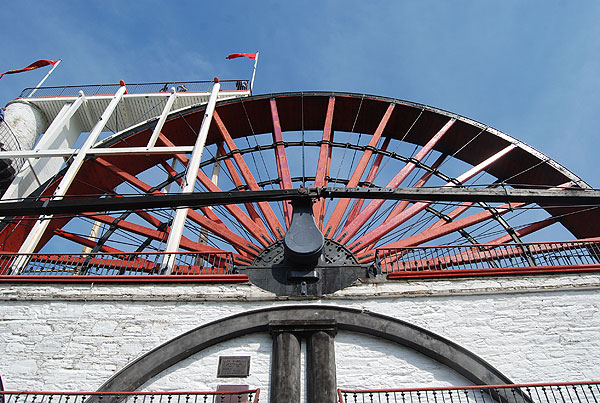
Water wheels, or water mills, have been around for over 2000 years. Various improvements have been added and uses expanded, from grinding grain to powering automatons for amusement. An explosive growth of water wheels in the 10th and 11th centuries fueled much of the industry of medieval Europe. The classical water wheel may be said to have reached its pinnacle in the Laxey Wheel located near the town of Ramsey on the Isle of Man. I recently was treated to a hands-on tour of this engineering marvel.
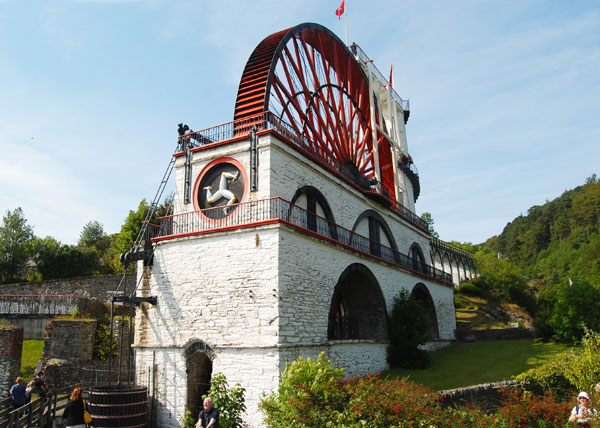
The bright paint and pastoral setting make her a sight indeed.
In the early 19th century, the Laxey mines were rich with lead, zinc, and other metals for which there was a heavy appetite. But a problem — as the miners followed the richest veins deeper underground, water accumulated in the mine shafts and hampered their efforts. A means of removing the water to get at these deeper deposits was needed. With the industrial age in full swing, the ready answer was the use of a coal-fired steam engine. But on the Isle of Man, coal was not to be found, and the cost of importing it was prohibitive. Water, however, was abundant.
Self-taught engineer Robert Casement was tasked with the solution. He applied the modern technology of the day to the ancient concept of the water wheel. Casement created a system of channels, or lades, that diverted water from hillside streams into a cistern. From here, a pipe carried this water across a bridge and into a tower that reached above the great wheel. The flowing water then fell onto the top of the wheel into the buckets built into the rim, allowing the weight of the water to turn the wheel. And what a wheel! 72 ' feet in diameter, 6 feet wide, mounted in a beautiful and castle-like housing. A crankshaft transferred its 3 revolutions per minute into a long mechanism; that mechanism drove pumps 600 feet away. The pumps in turn lifted water from the nearly 1500 foot depth of the main shaft to the surface. This drained 250 gallons per minute into the Laxey River below.
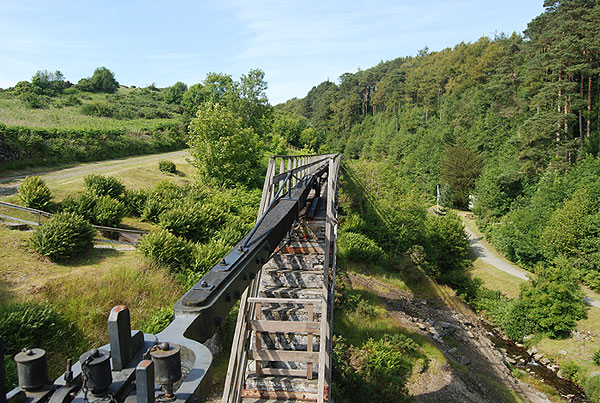
This series of timbers transferred the horizontal motion up the hillside to main shaft of the mine. The whole train oscillates back and forth with a swing of about eight feet.
After 4 years of construction and with much fanfare, the Laxey Wheel was opened in September of 1854 and christened Lady Isabella, after the wife of the current governor. The wheel became a major tourist attraction, and continued to serve the mine until it closed in 1929. It was preserved largely through the efforts of a local builder until purchased by the Manx government in 1965, and is now maintained by the Manx National Heritage. In 2004, the lady celebrated her 150th birthday.
Although Lady Isabella no longer pumps water, she still runs continually and remains the largest operating water wheel in the world. And she teaches some great lessons. A good idea is a good idea, no matter how ancient; endurance over time is the test. Progressive technology lets us take an old idea and use it better and smarter. This bucolic high technology was the final step on the way to the modern water turbine. And, ingenuity pushes us to make the best use of in situ (on site) resources, using methods both old and new.
I'm (astronaut) Michael Barratt for the University of Houston, where we're interested in the way inventive minds work.
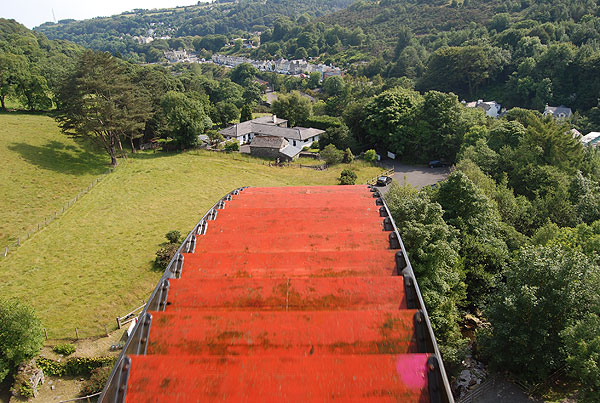
Here you can see the individual water buckets built into the rim of the wheel. This is an overshot wheel, meaning the water falls from above onto the wheel, as opposed to an undershot wheel, where water velocity of a fast moving stream turns the water wheel from the bottom. Overshot wheels are much more efficient. In addition, the Laxey Wheel is a backshot wheel, meaning the water falls onto the side nearest the water flow. This keeps the wheel moving in the direction of the overall flow of water along the stream. According to local lore, this also comforted the residents of the valley below, fearful that if the wheel were to fall off its bearings any extra forward turning would send it hurtling down on them.
End Notes
The Laxey Wheel, sometimes called the Great Laxey Wheel and formally known as Lady Isabella, really is every bit the engineering marvel when you consider the technology of the day, the remoteness of the site, and the sheer scale of this machine. That it served the mine carrying out its intended function for over 70 years itself is amazing. But the real experience of the Lady Isabella is to see this beautiful structure and climb aboard the scaffolds and ladders. Waterfalls and flows, the wheel turns, massive timbers creak in motion, their ends held in place by stout iron fittings — you have the sense of timelessness, that this will be operating at least another 150 years. She is obviously a well cared for treasure of the Manx people.
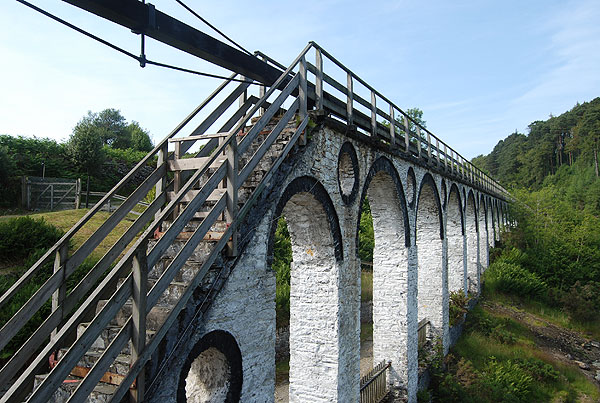
A different view of the connecting rod train, emphasizing the structure required for support.
By way of more detailed description of how this system works, here is some expanded text. The wheel transfers its power via a rocker arm at its center to a crankshaft. This drives a governor on one side and a horizontal power rod on the other. The power rod extends 600 feet toward the main shaft and consists of multiple pieces of timber that also lie on rollers over their course to minimize friction. This shaft is in turn attached to a T rocker, which translates the horizontal oscillating motion to a vertical motion. The engine shaft within the main shaft accommodated a series of 5 plunger pumps at 300ft intervals, lifting water 1482 feet, finally discharging it into the Laxey River. Unfortunately, the effluent carried a high concentration of lead and other toxic metals and badly polluted the Laxey River. The river has recovered nicely since the mines have closed.
On the front of the wheel's support structure is the classic triskelion of legs denoting the Isle of Man, also known as the Three Legs of Man. The purists among you may notice that it is indeed backwards, apparently due to failure to invert the design after the pattern was lifted from another relief.

The great iron crankshaft at the wheel's center, seen from above. The rod on the left connects to a large vertical piston that serves as a governor to maintain the three revolutions per minute. The rod to the right connects to a series of rods that transfer the horizontal motion up the hillside. Of course the rods are massive timbers. Interestingly, there is another large crankshaft lying on the ground nearby, that could be fitted to the other side of the wheel should an additional power train be needed. Apparently there was power to spare.
References
The Great Laxey Wheel and Mines Trail. Copyright 2007 Manx National Heritage.
Onsite signage at the Laxey Wheel visitors station — very informative!
I also found a wealth of answers from Mr. Howard Parkin, chairman of the Isle of Man Astronomical Society, who did an engineering thesis on the Laxey Wheel.
And of course, the venerable Wikipedia: https://en.wikipedia.org/wiki/Laxey_Wheel.